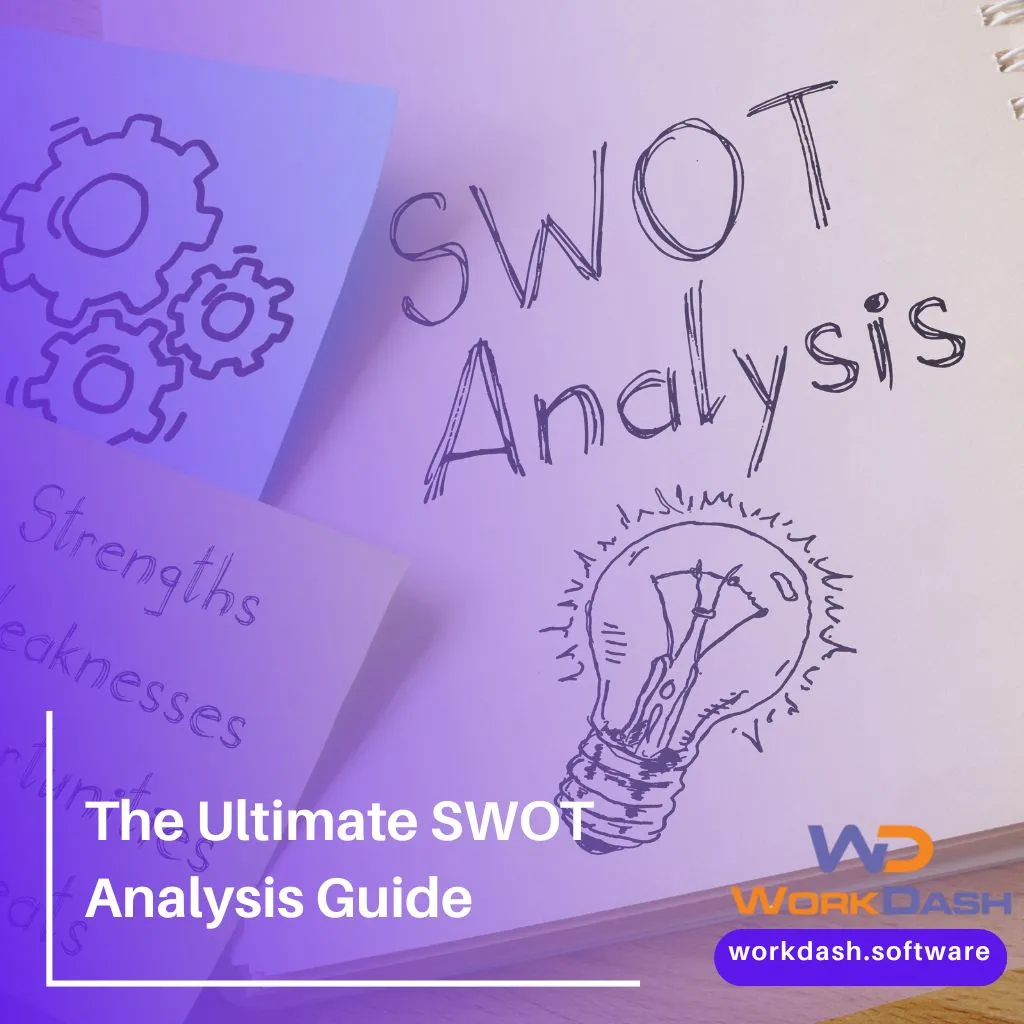Table of Contents
In today’s competitive business environment, understanding where your company stands is crucial for long-term success. SWOT analysis is a strategic planning tool that helps organisations assess their internal strengths and weaknesses while identifying external opportunities and threats. Whether you’re launching a new product, refining your marketing strategy, or making critical business decisions, a well-executed SWOT analysis provides valuable insights.
This guide will walk you through how to conduct a SWOT analysis, provide a real-world SWOT analysis example, and explain how businesses can use SWOT to remain competitive. By the end of this article, you’ll have a clear understanding of how to leverage this powerful planning tool to evaluate and enhance your business strategy.
Understanding the SWOT Analysis Template
A SWOT analysis template is a structured framework that divides key business factors into four categories:
| Quadrant | Description |
|---|---|
| Strengths | Internal factors that give your business a competitive advantage (e.g., strong brand, skilled workforce, unique technology). |
| Weaknesses | Internal areas where your business may require improvement (e.g., high costs, outdated processes, lack of brand awareness). |
| Opportunities | External factors that could accelerate business growth (e.g., emerging markets, industry trends, technological advancements). |
| Threats | External factors beyond your control that may negatively impact your business (e.g., economic downturns, new competitors, regulatory changes). |
This template helps organisations systematically assess both internal and external factors, making it easier to identify areas for improvement and growth.
Why Use a SWOT Analysis?
Provides a clear snapshot of your business’s current position
Helps with strategic decision-making and resource allocation
Identifies potential risks and contingency plans to mitigate threats
Supports business planning for new ventures, product launches, and market expansion
How to Conduct a SWOT Analysis
Conducting a SWOT analysis involves several key steps to ensure a comprehensive evaluation of your business.
Step 1: Gather Relevant Data
Before you start filling out the SWOT framework, collect information on:
Market trends – industry growth, consumer behavior, and economic conditions
Competitor analysis – strengths, weaknesses, pricing strategies, and market share
Internal performance – sales reports, customer feedback, employee productivity
Step 2: Brainstorm and Categorise Factors
Using a team-based approach, list down all possible strengths, weaknesses, opportunities, and threats. Encourage open discussions to compile insights from different departments.
Step 3: Prioritise Key Findings
Not every factor carries the same weight. Focus on the most actionable and impactful elements to drive strategic decision-making.
Step 4: Develop an Action Plan
Use your SWOT analysis to:
Leverage strengths – Capitalise on your competitive advantages
Improve weaknesses – Develop strategies to minimise internal limitations
Seize opportunities – Explore growth avenues, new markets, or product innovation
Mitigate threats – Implement risk management strategies to stay ahead of external challenges
By systematically conducting a SWOT analysis, businesses can ensure they make data-driven decisions that align with their long-term objectives.
SWOT Analysis Example for Businesses
To better understand how a SWOT analysis is a strategic planning tool, let’s look at a real-world example:
Case Study: SWOT Analysis of a Café Business
| Factor | Example |
|---|---|
| Strengths | High-quality coffee, loyal customer base, prime location in a busy district. |
| Weaknesses | Limited seating capacity, reliance on seasonal foot traffic. |
| Opportunities | Expansion into online delivery, potential franchise model, increased demand for organic coffee. |
| Threats | Rising costs of coffee beans, competition from global coffee chains, changing consumer preferences. |
Key Takeaways from the SWOT Analysis:
The café’s strong brand and quality product give it a competitive edge
To overcome seating limitations, online delivery could be an opportunity
To mitigate competition threats, investing in unique selling points (e.g., organic or locally sourced coffee) could differentiate the brand
This example shows how a business can use SWOT analysis to refine its strategy and stay competitive.
Benefits of SWOT Analysis in Business Strategy
A SWOT analysis is a powerful tool that provides multiple benefits for businesses across industries.
1. Identifies Competitive Advantage
By analysing internal strengths, businesses can leverage unique capabilities to stay ahead of competitors.
2. Helps Mitigate Risks
Recognising threats early allows businesses to create contingency plans and mitigate potential risks.
3. Guides Strategic Planning
Strategic planning tools like SWOT ensure business goals align with external market conditions and internal resources.
4. Improves Decision-Making
A well-structured SWOT analysis enables data-driven decisions, reducing uncertainty in business planning.
5. Supports Innovation and Growth
By identifying opportunities, businesses can explore new markets, product lines, and advertising campaigns.
Common Mistakes to Avoid in SWOT Analysis
Overloading the SWOT matrix – Focus on key actionable points
Being too vague – Use specific data to support findings
Ignoring external factors – Stay aware of market trends and competitors
Not implementing the insights – A SWOT analysis is only valuable when followed by strategic actions
Conclusion
A SWOT analysis is a strategic planning tool that helps businesses identify areas for improvement, assess internal and external factors, and develop a strong competitive strategy. Whether you’re launching a new product, expanding to new markets, or refining your business environment, conducting a SWOT analysis ensures better decision-making and long-term success.
By consistently using SWOT, businesses can adapt to constantly changing external forces, maximise opportunities, and mitigate threats that could impact their growth. Start your SWOT analysis today and take control of your business planning with confidence.





